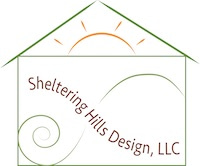Defining "permaculture"
There are hundreds of definitions of permaculture. Here's the one I use: Permaculture is an ethical system of design that integrates humans with the natural world.
Let's break that down.
Permaculture = "permanent agriculture" and "permanent culture"
Ethical = Care of the Earth (primary); Care of People; Care of the Future
System = working with an awareness of the interconnectedness of elements of any system we focus on.
of Design = We are co-creating with the Earth and with other people in a way that is intentional and careful
Integrates Humans with the Natural World = we developed a civilization/society that has disconnected us from the Earth we depend upon. (This one if full of tricky implications if you think about it.) Further, we tend to be deeply disconnected from each other.
We can do better, and we can keep improving.
The Problem
I begin almost all of my permaculture design courses with the question:
What is going on in the world? What's the news?
It doesn't take long for the board to fill with "events" that, when we look at them, are systematically connected. Just as the problems are interconnected, so are the solutions.
The Solution
It is time to reintegrate our way of life so that we can heal the Earth, heal ourselves, and tend to the best possible future. We can return to a life which is deeply connected--one that allows us to express the best of the human journey on the planet. What can that look like?
- Growing more of our own food in order to have more nutrition, fewer costs, more food security, and a sense of accomplishment and connection. People mostly think of permaculture in relation to horticultural and agricultural techniques.
- Increasing the efficiency of our home -- providing for more of its energy, water, and material needs in order to cut costs, increase resilience, and be more productive.
- Participating in community-wide initiatives in a way that brings people together. Maybe you love time banks, or food pantries, or developing new products for your area that support the regional economy.
- Developing a neighborhood community or an eco village. Permaculture can thrive in these environments.
- Learning the plants, birds, insects, and mammals of your area so that you can help to tend and repair the landscape you all share.
Most of all, this is about limiting our impact on the Earth and tipping the balance toward a way of life that will allow future generations to thrive. We can imagine, design, and enact that right now.
